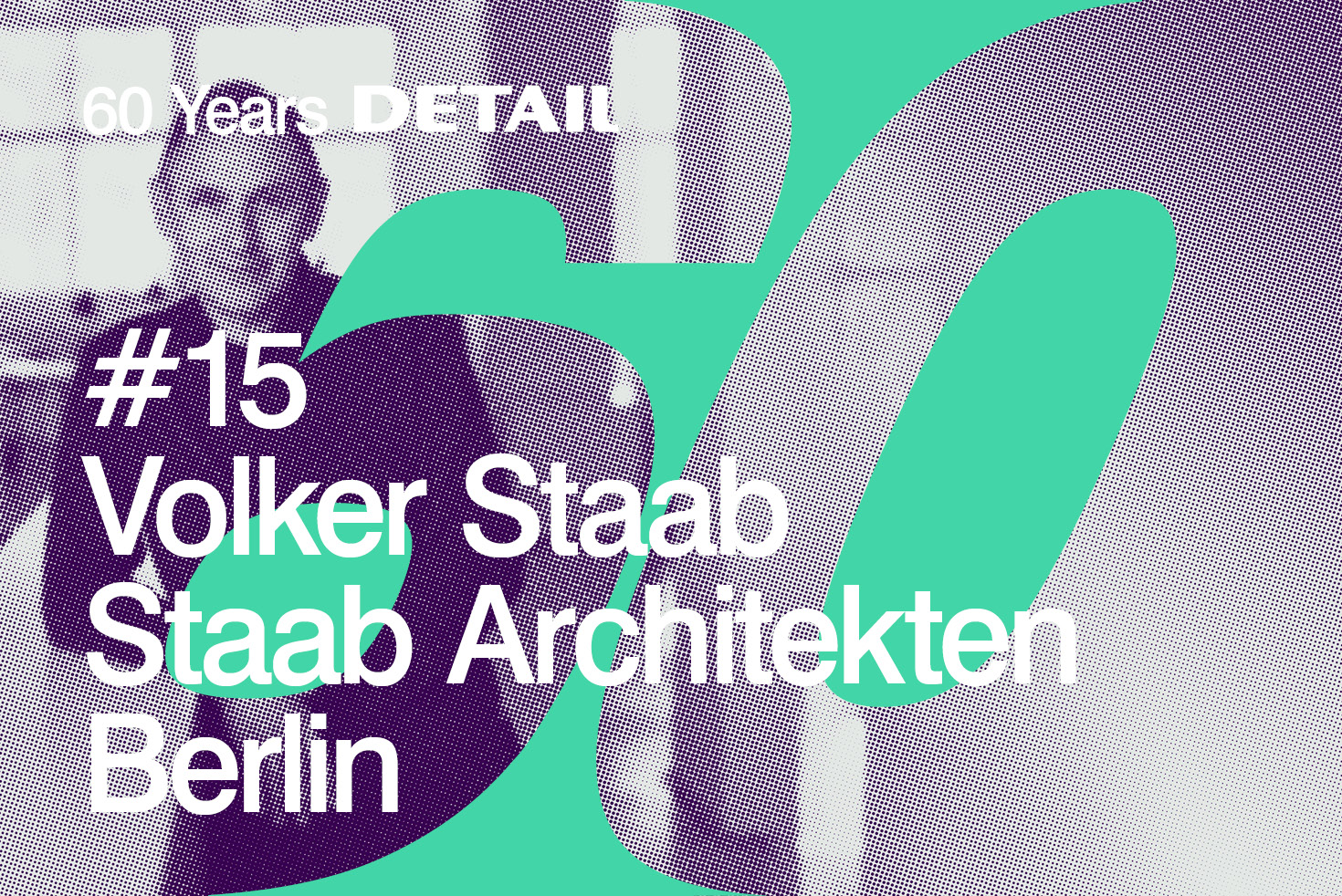Power and Shortcomings: Volker Staab on 60 Years of Architecture

On the anniversary of Detail, the founding partner of Staab Architekten reflects on 1960s architecture and takes a look into the future.
What is the legacy of 1960s architecture?
The 1960s revealed to us both the power and the shortcomings of design-related dogmas. On the one hand, they liberated great potential for visionary ideas and experiments in building; on the other, they and their monothematicism have left us with problematic urban spaces that preoccupy us to this day.
When did you first encounter Detail?
When I was a student, the magazine made it possible to understand, via the latest examples, how architecture is really carried out.
Where do you see architecture 60 years from now?
Like the people we build for, the fundamental architectural questions and elements will remain the same. However, the production of architecture will probably have undergone significant change.
Volker Staab is the founder of Staab Architekten in Berlin. After winning the competition to design the Neues Museum in Nuremberg in 1991, he opened his own architecture studio and has worked in partnership with Alfred Nieuwenhuizen since 1996. Staab’s work focuses on public buildings for culture, education and research which often stand in sensitive or historically protected urban spaces or landscapes. After occupying guest professorships at the TU Berlin, Münster University of Applied Sciences and the Academy of Arts in Stuttgart, he became a professor of design at the TU in Braunschweig. In 2011, Staab won the Grand Prize awarded by the Association of German Architects. He is a member of the Academy of Arts.



